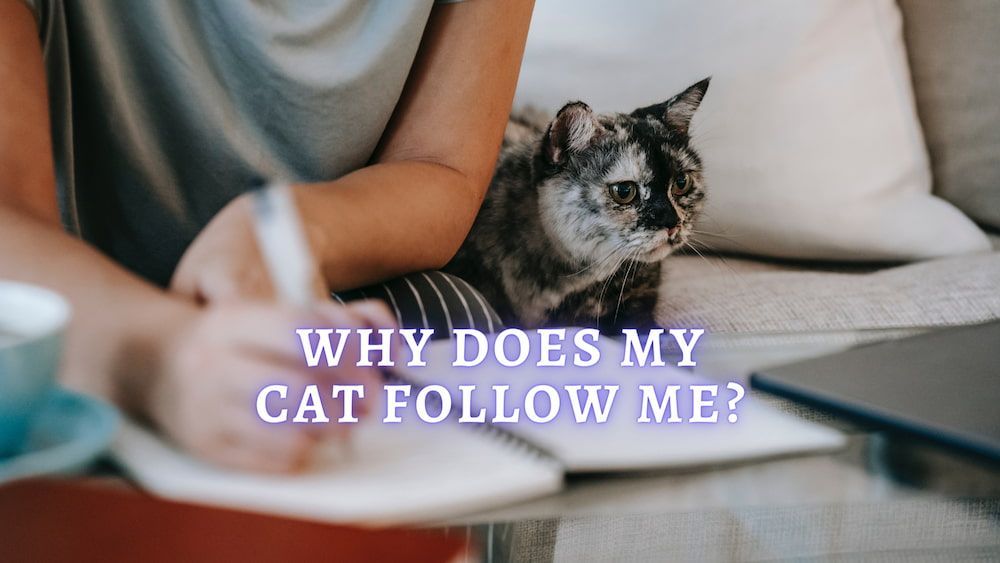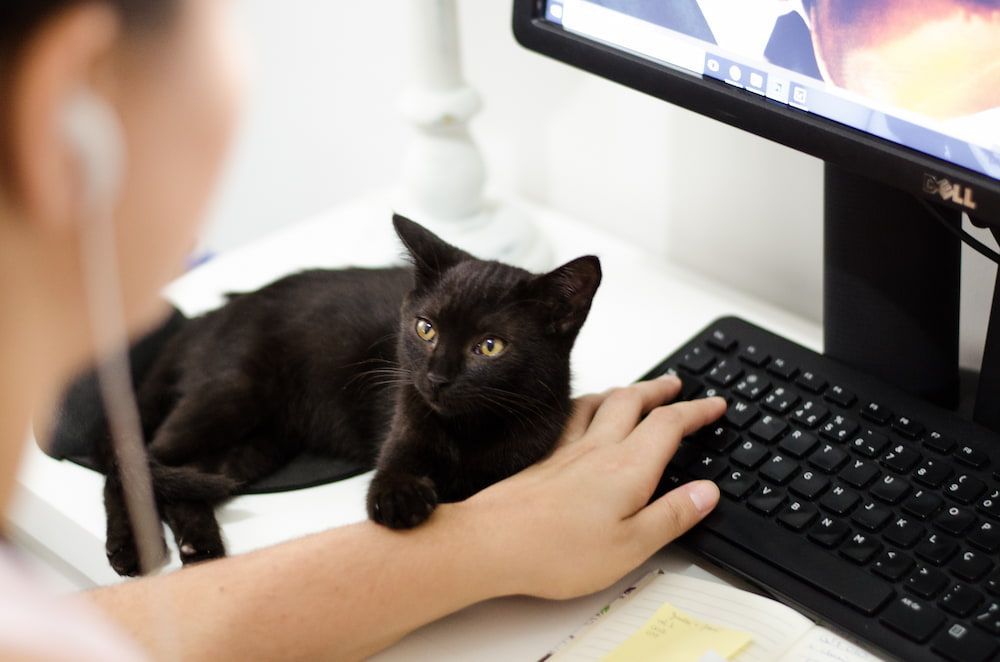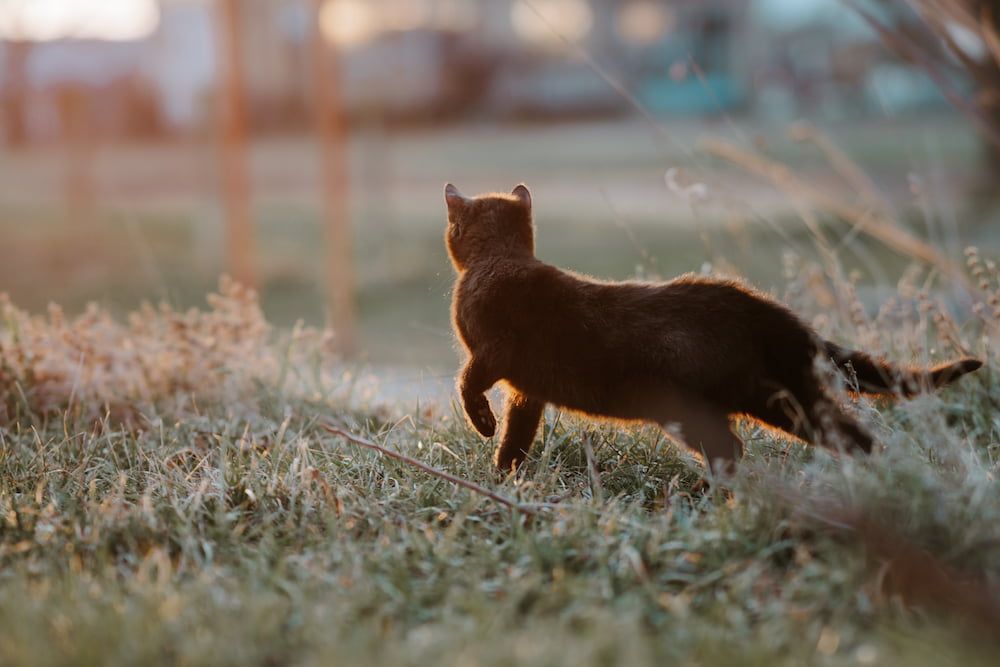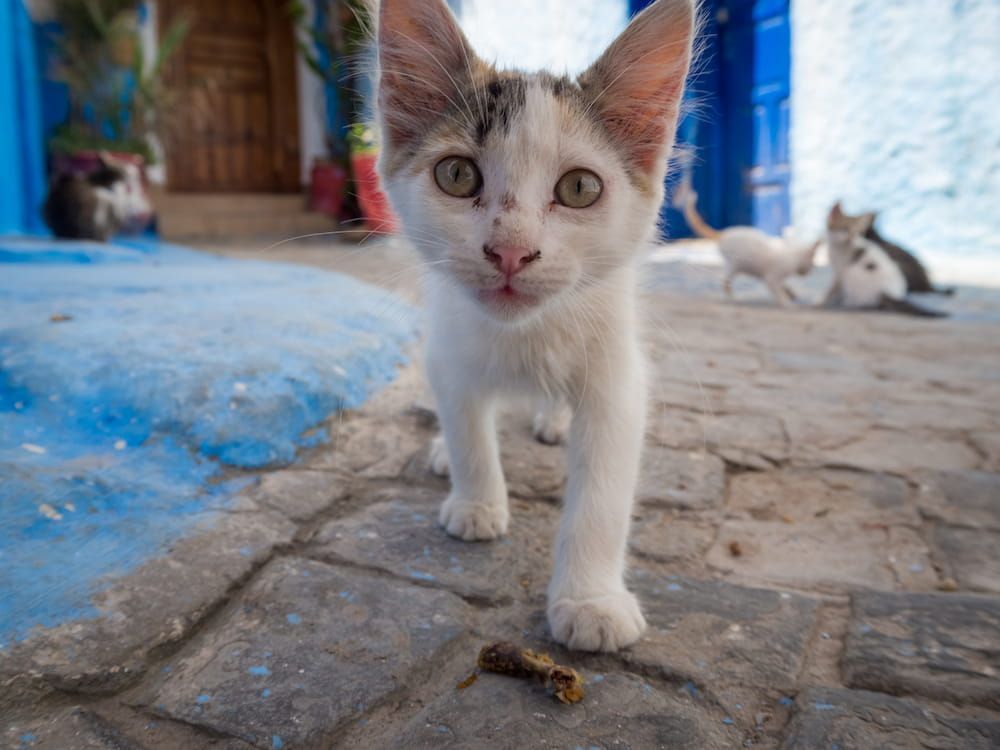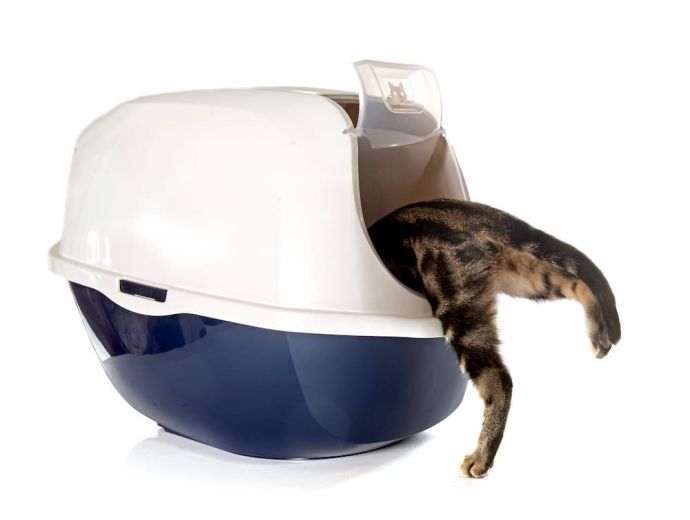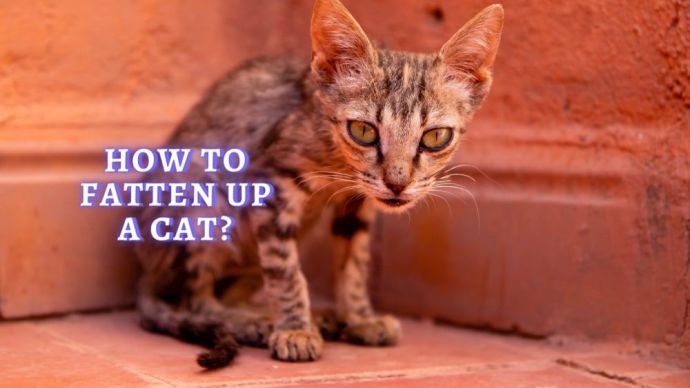Why Does My Cat Follow Me? Reasons Why Your Cat’s Following You Everywhere
Written by:
Author: Marissa Prizio
Marissa Prizio attended the University of New Hampshire and earned a bachelor's degree in biomedical Animal Science. Marissa has always enjoyed writing; she was even mixing literature classes into her science major in college. During her writing career, she has edited eBooks, written for a variety of websites, and created audio-visual courses for sustainability.
View all 36 articlesLearn about our editorial process and veterinary review board.
Viewed: 188
Updated on: 03/28/2022
The motivations behind clingy cats
Cats are often stereotyped as being solitary and fiercely independent, but that isn’t the whole story. Every cat owner knows that cats can be clingy, loving, and as attentive as any dog. In most cases, following people can be normal feline behavior, but it still leaves people wondering, “Why does my cat follow me?”
Understanding why your feline friend is following you around is important if you want to maintain a good relationship with them and meet their needs. The simple act of following you around can say a lot, so let’s break this behavior down into bite-size pieces.
What is motivating cats to follow people around?
Cats are often smarter and far more complex than we give them credit for. If you find yourself being followed by a pet you can take it as quite a compliment in most cases. When attempting to determine why your pet follows you, make sure to consider context and body language, and these factors can provide strong hints to your cat’s intentions.
1. Love & Affection
Slow blinks, purring and making biscuits are commonly considered cats’ ways of saying “I love you”, but their love language can be more complex than that. [1] They are social animals and they can form bonds with individuals, including you.
If you notice your kitty follow you from room to room when nothing interesting happens, it may simply be because they love you and seek affection. [3] All our pets can seek our love, but some do so more than others.
Some breeds, including the Ragdoll and Persian or any associated mixed breeds, tend to be clingy and seek human affection. These cats love being with their humans and are often called lap pets, but if your lap is on the move, they will move with you. [6] A pet seeking your love may even stand on its hind legs to be picked up and cuddled!
Female cats in heat are also more attention-seeking and social, so it is not uncommon to see a female pet in heat following and chatting to their favorite person.
2. Play
Play is an important part of your pet’s health. Some breeds may be more playful than others and their intensity of play can change with age. Regardless, cats seek out opportunities to indulge in their instincts through play, and, for indoor pets, humans are often a part of that experience. [2]
If your kitty learns that certain toys are more fun when you are involved, they may follow you around in hopes of enticing you to play. Some kitties may even bring you toys or engage in playful behaviors while following you, like stalking or pouncing. [1]
If you offer your pet an opportunity to play and they happily join, then you may have discovered their reason for pestering you.
3. Boredom
Cats may like routine, but they are also brimming with curiosity. Outdoor kitties have opportunities to embrace their curiosity and experience change on a daily basis, but indoor kitties don’t always have the same luxury.
They can get bored easily if they aren’t stimulating activities and objects. Their boredom can manifest in over-grooming, apathetic behavior, a loss of interest in food or overeating, and even following you around. [4] [7]
Without any alternate activities, following you may be the most interesting thing your cat feels they can do. Adding opportunities for engagement, like a pet tree or new toys, can help beat your pet’s boredom.
4. Begging For Food
Like most animals, cats fancy food and anything related to it. Your pet is smart and they can learn who is most likely to feed them and at what time they normally get fed. They follow people who they have known to provide food.
This applies to home pet cats, street and stray cats. Once people are associated with food more than fear, cats may follow them as a way of begging for food. This behavior is often coupled with vocalizations to get the person’s attention.
If you are looking to stop your pet from following you around their feeding time, you can start to train them by only providing food once they leave you alone. Automatic feeders are another great alternative to refocus your cat’s begging behavior off of you and onto something else.
READ MORE: 8 Signs Your Cat Loves You
5. Help
If you and your pet have a good relationship, then in their eyes you are not just their company, but also their helper. Cats have been known to follow their owners around when needed. This need may be as small as reaching a stuck toy, or it may have to do with your pet not feeling well.
When your pet behaves differently and seems extra needy while following you, it may be a sign that they need help with something. Take the time to look them over or see if they guide you somewhere, and you might just discover what it is that they need help with.
6. Safty
Recently adopted rescue pets know what life is like when safety is not guaranteed. Even a pet you have raised from a kitten could have experienced a traumatic event that sometimes causes them to feel unsafe. When you have a strong bond with your pet, they start to feel secure in your presence and may follow you to maintain their safety.
7. Territorial Concerns
Cats can be territorial animals, especially males. In natural situations, a male will follow other pets infringing on their territory. Pets may also follow companions to mark territory alongside them. [4]
If you notice your pet rubbing on you and other items as they follow, they are likely marking all the things that they believe are part of their territory. [1]
Is it normal for my cat to follow me everywhere?
A clingy cat may not be abnormal depending on their breed and personality, but there are a few cases where it may not be normal for your pet to follow you around the house. [6] If you find yourself thinking, “ Why does my cat follow me everywhere all of the time?” or this is new and abnormal behavior for your pet, you may want to look into it further.
Felines can suffer from separation anxiety, they may need help with something, or there could be another concern motivating their behavior. [4] If your pet’s inability to be apart from you interrupts either of your sleep patterns or daily activities, it is worth consulting a trusted veterinarian.
READ MORE: 8 Reasons Why Is My Cat So Clingy
Should I be concerned if my cat follows me to the bathroom?
Pets tend to have a weird fascination with following their owners into the bathroom, and while the dog & cat desire to be close to us is adorable it is not always reasonable. It is healthy for all pets and people to be able to have some alone time, and this should not cause any distress.
If you find that your pet is distressed when they are not in the same room as you or unable to follow you around the house, they could be suffering from separation anxiety. [4] Having your pet follow you to the bathroom all the time can be uncomfortable and safety concern if you instinctively pull the door shut behind you. If this behavior is constant and consistent, it may benefit you both to seek professional help.
What are the signs of separation anxiety in cats?
Dogs and cats are both capable of experiencing separation anxiety; however, they tend to display this condition differently. Most dogs bark or vocalize when separated from their owners, but it is more common that a pet shows their stress by engaging in attention-seeking or destructive behaviors. [4] [5]
Like dogs, some cats will urinate or defecate in inappropriate areas to show their stress when separated. A healthy and happy feline will rarely show these behaviors.
If your pet is social they may do well in a house with two or three cats, so they can entertain each other and maintain consistent company. For less social kitties, a feline friend may only cause more stress, so be sure to assess your cat’s preferences and needs before new additions are brought into your home. [2]
Why do stray cats follow me?
Domestic kitties started out as wild cats, and part of their evolution included following people. A street cat may have once had a home or interacted with people regularly in the past. [8] People may be synonymous with food or safety for a stray cat, so stray kitties follow people in hopes of obtaining these necessities.
Feral cats leave humans alone because they are unfamiliar with humans and see them more as a threat than a helping hand. Regardless of why an unknown outdoor cat is following you, take caution to avoid bites or scratches that can transmit disease.
READ MORE: What to do with a Stray Cat? (Veterinary Advice)
FAQ:
Do cats have a favorite person?
Domestic cats have favorite humans they may follow and spend more time with than others. Cats are smart, so their choice of favorite person may be motivated by their likelihood of being fed or played with.
Why does my cat follow me everywhere I go?
If your cat loves to follow you around, their behavior can be motivated by a multitude of things. This includes our feline friends need to play, their love for us, needing help, begging for food, feeling bored, looking for security, or marking their territory.
Why does my cat follow and stare at me constantly?
If you have just welcomed a new kitty into the house, you may find them following and staring quite often. This behavior can be prompted by their natural curious disposition or to obtain your attention for some reason.
If all this staring and following is associated with other odd behaviors, take the time to assess your cat’s needs and health to rule out any issues inciting this behavior.
Article Sources:
- “The cats meow, Understanding Feline Language.” The Humane Society Of The United States, humanesociety.org/resources/cats-meow.
- Dell’Amore, Christine. “What Do Cats Think About Us? You May Be Surprised.” Adventure, 3 May 2021, nationalgeographic.com/adventure/article/140127-cats-pets-animals-nation-dogs-people-science.
- Finlay, Katie. “Six Unique Ways Cats Show Affection.” Hill’s Pet Nutrition, 5 Sept. 2016, hillspet.com/cat-care/behavior-appearance/six-ways-cats-show-affection.
- “Why Does My Cat Follow Me Everywhere?” AnimalPath.Org, animalpath.org/why-does-my-cat-follow-me-everywhere/.
- “Soothing Separation Anxiety.” San Francisco SPCA, sfspca.org/blog/soothing-separation-anxiety/.
- “The Most Affectionate and Friendliest Cat Breeds .” Purina, purina.co.uk/find-a-pet/articles/cat-types/breed-guides/friendliest-cat-breeds.
- “Signs of Boredom in Your Cat” Danbury Animal Welfare Society. 10 Sept. 2017, daws.org/signs-of-boredom-in-your-cat/.
- “A Closer Look at Community Cats.” ASPCA, aspca.org/helping-people-pets/shelter-intake-and-surrender/closer-look-community-cats.
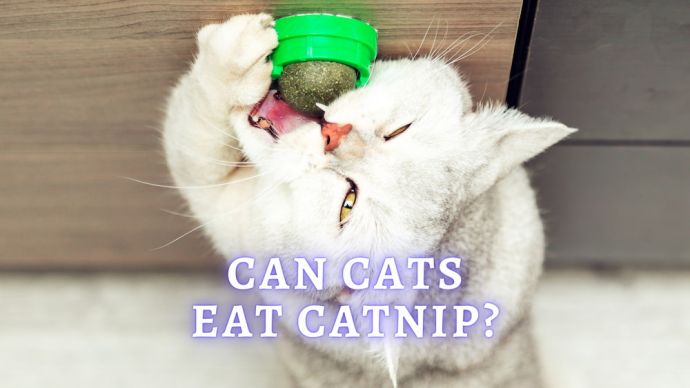 Cat Care Can Cats Eat Catnip? Are There Any Health Benefits to Cats Eating Catnip?
Cat Care Can Cats Eat Catnip? Are There Any Health Benefits to Cats Eating Catnip? - 84
- 0
 Cat Care Why Does My Cat Attack My Legs? 10 Reasons Why and What To Do About It (Vet-Approved Advice)
Cat Care Why Does My Cat Attack My Legs? 10 Reasons Why and What To Do About It (Vet-Approved Advice) - 45567
- 21
 Cat Veterinary Tips Cat Stomach Gurgling: Vet Advice on Why is Your Cat Stomach Gurgling?
Cat Veterinary Tips Cat Stomach Gurgling: Vet Advice on Why is Your Cat Stomach Gurgling? - 35340
- 4
 Cat Veterinary Tips My Cat Lost its Voice: Can Cats get Laryngitis? (Vet Advice)
Cat Veterinary Tips My Cat Lost its Voice: Can Cats get Laryngitis? (Vet Advice) - 23247
- 13









